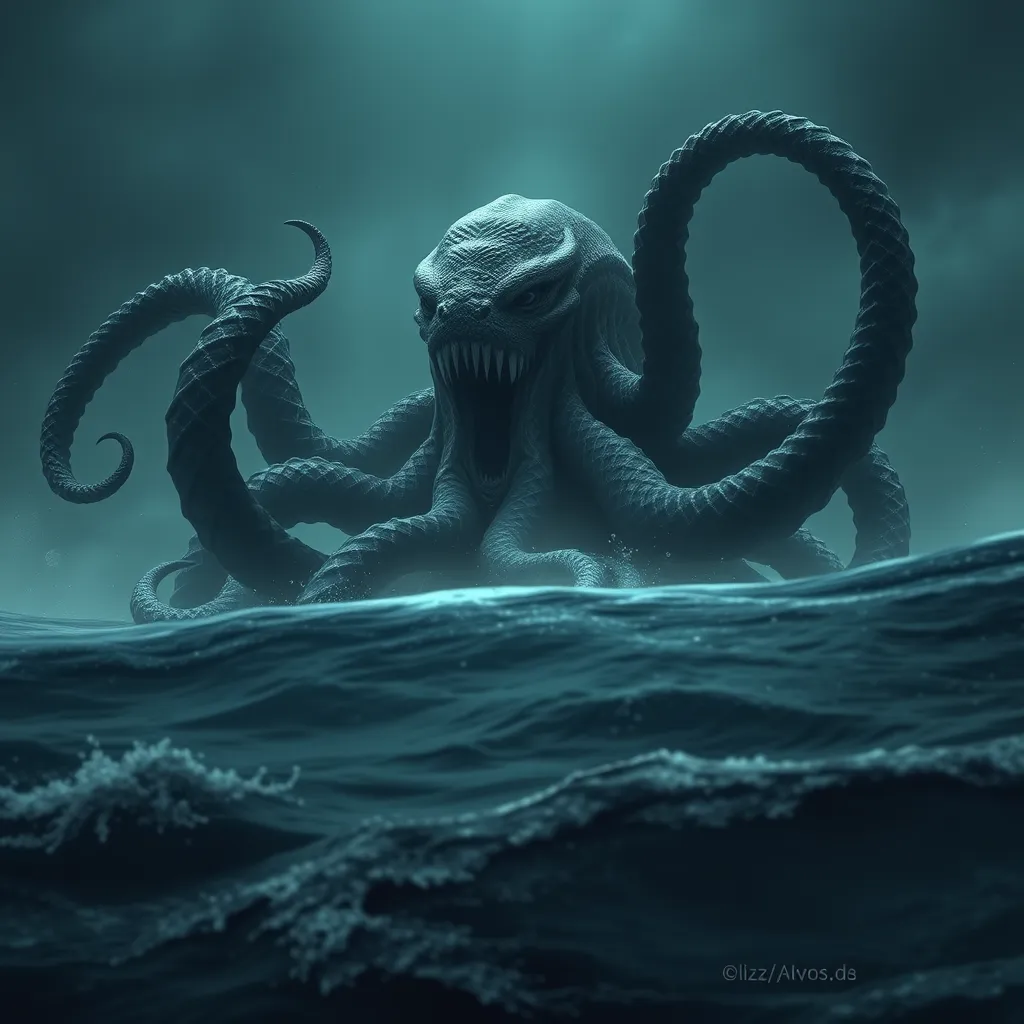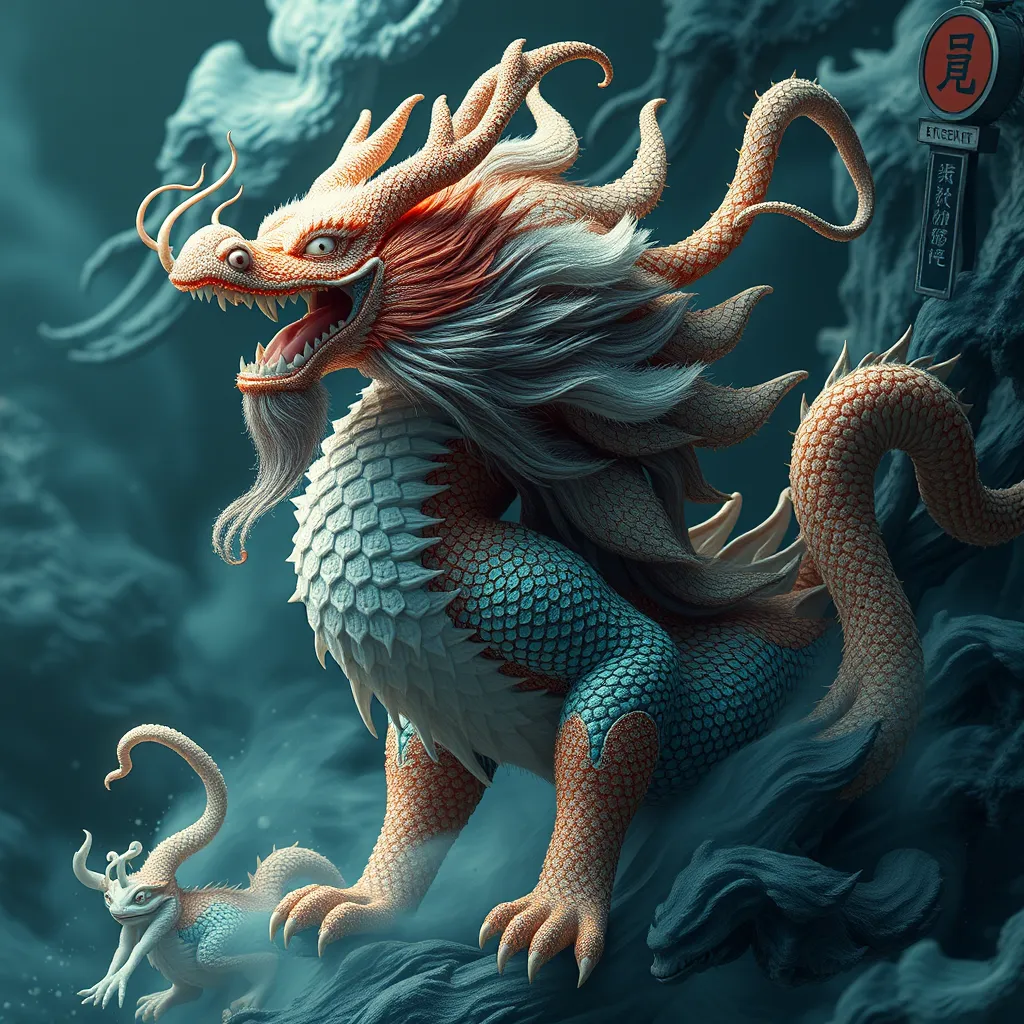Echidna: A Timeless Archetype – The Serpent-Woman as a Universal Representation of Chaos and the Unknown
I. Introduction
Echidna, a formidable figure in Greek mythology, is often depicted as a monstrous serpent-woman who embodies the essence of chaos and creation. As the wife of Typhon and mother to many legendary beasts, Echidna serves as a vital archetype that encapsulates the duality of existence. Understanding archetypes like Echidna is essential for comprehending cultural narratives that explore human fears, desires, and the interplay between chaos and order.
This article posits that Echidna exemplifies the serpent-woman archetype, representing the complexities of chaos and creation, and inviting reflections on femininity, motherhood, and the unknown.
II. The Origins of Echidna in Mythology
The origins of Echidna can be traced back to ancient Greek mythology, where she is often referred to as the “Mother of Monsters.” According to various sources, including Hesiod’s “Theogony,” Echidna is the offspring of Phorcys and Ceto, primordial sea deities. This lineage situates her within a framework of chaotic forces, emphasizing her ties to both the monstrous and the divine.
Echidna’s relationships with other mythological figures further illustrate her significance. She is notably the consort of Typhon, a monstrous giant who represents the chaos of nature and challenges the order established by the Olympian gods. Together, they create a suite of monstrous offspring, including the Chimera, Cerberus, and the Sphinx. This role as a progenitor of chaos solidifies her place in the mythological canon as a figure who embodies both creation and destruction.
III. The Serpent-Woman Archetype
The serpent-woman archetype is a powerful symbol found across various cultures, representing duality, temptation, and transformation. This archetype often features traits such as:
- Ambiguity: Serpent-women often straddle the line between good and evil.
- Fertility: They are frequently associated with creation and regeneration.
- Wisdom: Symbolically connected to knowledge and the unknown.
In comparing Echidna to other serpent-woman figures, such as Lilith and Medusa, we find striking similarities. Lilith, often associated with night and chaos, embodies the rejection of traditional femininity and motherhood. Medusa, cursed with a monstrous appearance, represents the fear of female power and sexuality. Each of these figures, like Echidna, challenges societal norms and embodies a complex interplay of creation and destruction.
IV. Chaos and the Unknown: The Dual Nature of Echidna
Chaos is frequently viewed as a destructive force; however, it also serves as a creative catalyst. Echidna’s existence highlights this dual nature. She represents the unknown—an entity that invokes fear yet also fosters growth and transformation. Her offspring, though monstrous, contribute to the rich tapestry of myth, symbolizing the complexities of existence.
Echidna’s role challenges traditional notions of motherhood and femininity. Unlike the nurturing mother archetype, she embodies a fierce, untamed aspect of femininity, suggesting that creation can arise from chaos. This duality prompts a reevaluation of feminine power, positioning it as both nurturing and destructive.
V. The Role of Echidna in Contemporary Culture
In contemporary culture, the influence of Echidna can be seen in various forms of media, literature, and art. She is often reimagined as a symbol of female empowerment and rebellion against patriarchal structures. Modern adaptations of the serpent-woman archetype frequently explore themes of independence, sexuality, and the reclaiming of power.
Examples include:
- Literary works that reinterpret mythological figures to address modern issues of gender and identity.
- Films and television series that portray serpent-women as complex characters, embodying both strength and vulnerability.
- Artistic representations that celebrate the chaotic beauty of femininity.
Through these portrayals, Echidna’s legacy persists, offering a lens through which to discuss feminism and empowerment, challenging audiences to embrace the complexities of female identity.
VI. Psychological Interpretations of Echidna
From a psychological perspective, Jungian analysis provides insight into the archetype of Echidna and the serpent-woman figure. Jung’s concept of the shadow self—the hidden, often repressed aspects of the psyche—aligns with Echidna’s representation of chaos and the unknown. She embodies the fears and desires that society often seeks to suppress.
Echidna’s significance lies in her ability to illuminate the complexities of the human experience, encouraging individuals to confront their inner chaos. By understanding Echidna, we gain insights into our fears of the unknown and the transformative potential that chaos holds. The serpent-woman archetype can thus be seen as a guide for personal growth and self-discovery.
VII. Ecological and Environmental Symbolism
Echidna’s connection to nature and the animal kingdom extends beyond mythology, offering ecological and environmental symbolism. The serpent, often associated with regeneration and the cyclical aspects of life, mirrors the natural world’s processes of birth, death, and rebirth. In this context, Echidna can be viewed as a representation of the earth’s chaotic forces and the necessity of balance between creation and destruction.
As modern society grapples with environmental challenges, Echidna’s archetype serves as a reminder of humanity’s connection to nature and the consequences of disrupting ecological harmony. By embracing the lessons of chaos and the unknown, we can foster a deeper appreciation for the environment and the intricate web of life it supports.
VIII. Conclusion
Echidna stands as a significant and timeless archetype, embodying the duality of chaos and creation. Her narrative invites reflection on the complexities of femininity, motherhood, and the unknown. As we explore the serpent-woman archetype across various cultural contexts, we uncover the enduring nature of chaos and its role in shaping human experience.
In an era where discussions of identity and power are more relevant than ever, Echidna continues to resonate, urging us to embrace the chaos within ourselves and recognize its potential for transformation. The exploration of the serpent-woman archetype remains a vital endeavor, illuminating pathways for understanding the multifaceted nature of existence.



